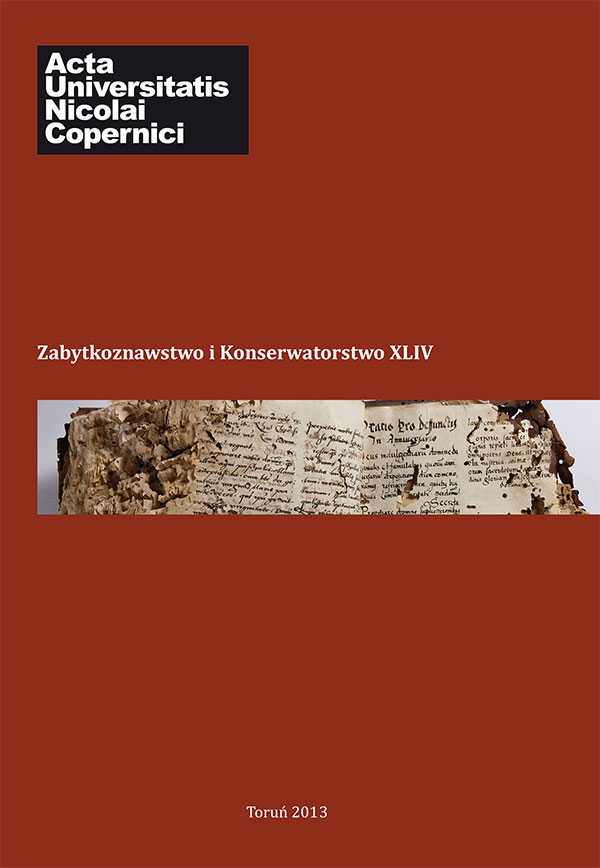Technologia i technika uzyskiwania wybranych impastów na podobraziach płóciennych
DOI:
https://doi.org/10.12775/AUNC_ZiK.2013.008Słowa kluczowe
impast, metody tworzenia impastów, techniki malarskieAbstrakt
Painting with the use of impasto has been known for ages. Using a considerable amount of paint for aesthetic and artistic purpose requires certain knowledge which would protect the work of art from damage. The aim of the undertaken research was to define the usefulness of 49 self-chosen types of binders typical of a few painting techniques applied on textile support covered with mortar of various capacity to absorb (emulsion like ‘water in oil’ and ‘oil in water’, gaining the so called mortar ‘slim’, ‘semi-fat’ and ‘fat’). A crucial aspect was to define the influence of the base on the quality of the painting texture. In order to enrich knowledge concerning possibilities of gaining impasto painting layer, the ability of easy application of paint having a different consistency: liquid and thick looking like ‘paste’ has been examined. Moreover, the quality of application and capability of spreading the paint with the use of a brush or a painting spatula has been studied. Additionally, two types of fillers: chalk and sand were added to the paint in order to acquire the desired form of impasto structure. Due to the purpose of using the research for the benefit of a contemporary artist and a conservator, as well as taking into consideration the complex nature of recipes found in literature, part of ingredients of binders has been modified and supplied with the ones accessible on the contemporary market. In the composition of binders of complex structure sets of a few binders can be found. They have been divided with regard to the type of the main binder and the capability to dilute and not dilute it with water.
Pobrania
Opublikowane
Jak cytować
Numer
Dział
Licencja
CC BY-ND 4.0. Posiadaczem prawa autorskiego (Licencjodawcą) jest Autor, który na mocy umowy licencyjnej udziela nieodpłatnie prawa do eksploatacji dzieła na polach wskazanych w umowie.
- Licencjodawca udziela Licencjobiorcy licencji niewyłącznej na korzystanie z Utworu/przedmiotu prawa pokrewnego w następujących polach eksploatacji: a) utrwalanie Utworu/przedmiotu prawa pokrewnego; b) reprodukowanie (zwielokrotnienie) Utworu/przedmiotu prawa pokrewnego drukiem i techniką cyfrową (e-book, audiobook); c) wprowadzania do obrotu egzemplarzy zwielokrotnionego Utworu/przedmiotu prawa pokrewnego; d) wprowadzenie Utworu/przedmiotu prawa pokrewnego do pamięci komputera; e) rozpowszechnianie utworu w wersji elektronicznej w formule open access na licencji Creative Commons (CC BY-ND 4.0) poprzez platformę cyfrową Wydawnictwa Naukowego UMK oraz repozytorium UMK.
- Korzystanie przez Licencjobiorcę z utrwalonego Utworu ww. polach nie jest ograniczone czasowo ilościowo i terytorialnie.
- Licencjodawca udziela Licencjobiorcy licencji do Utworu/przedmiotu prawa pokrewnego nieodpłatnie na czas nieokreślony
PEŁEN TEKST UMOWY LICENCYJNEJ >>
Statystyki
Liczba wyświetleń i pobrań: 1000
Liczba cytowań: 0



